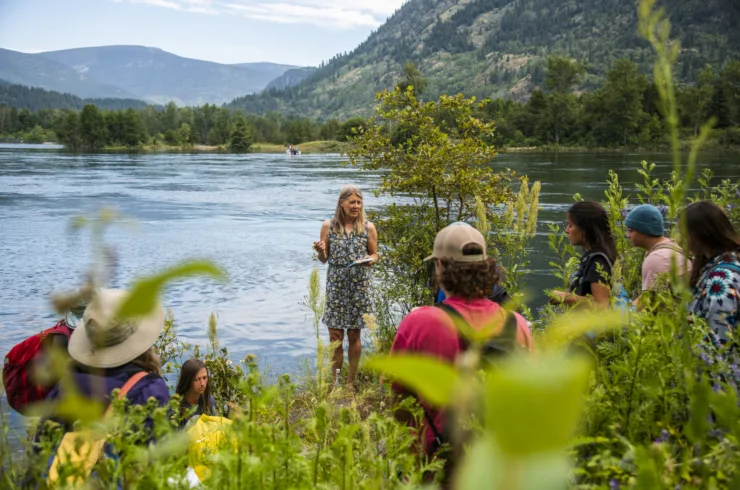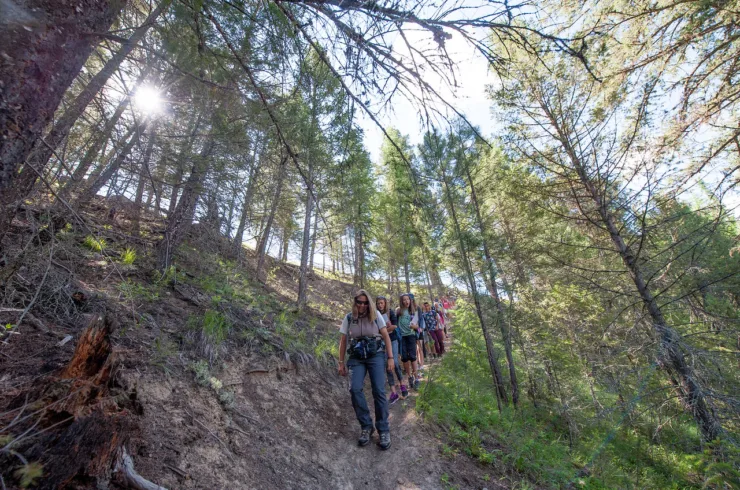This Know Your Watershed lesson builds upon what we have learned about physical properties of water and how the environment can modify water quality and quantity.
In this lesson, we will learn about water quantity or the amount of water that flows through our streams and why it is important that it is tracked. Students will learn how flow is measured and monitored to determine a hydrologic cycle of a stream.
In this short video, Know Your Watershed Educator Bill Coedy will introduce you to the Hows and Whys of Predicting Stream Flow in your local waterways.
This lesson plan will lead you through a short activity to help you better understand the hydrologic cycle of a monitored stream near you.
Introduction
In this lesson we will learn about why tracking water quantity is important and how stream flow and velocity are measured. We will discover how to track flow real-time and predict stream flow of a stream near you by accessing live water quantity data from Water Survey Canada’s website.
Watch as Know Your Watershed Educator Bill Coedy introduces you to Predicting Water Flow in a Stream:
This lesson plan provides video and written instructions on how to navigate the Water Survey Canada website to obtain water quantity flow data on a stream near you. The instructions will lead you through a short activity to help you better understand how to read stream flow data from a graph and how to make predictions on when next year’s spring runoff or freshet will occur. For best results, use the written instructions while viewing the video instructions. The written instructions provides students with the Predicting Stream Flow Lesson, and asks two followup questions.
Time:
- Video – Predicting Stream Flow Background: 2 minutes, 12 seconds
- Video – Predicting Stream Flow Video Lesson: 7 minutes, 22 seconds
- Lesson Exercise and answering questions: 20 minutes
Materials: Internet access, written instruction sheet, notebook
Instructions:
- Watch the background video on Predicting Stream Flow and grasp the hydrological concepts of staff gauge, velocity meter, and discharge.
- Use the written instruction lesson sheet to select the station location near you. For example, if you live close to Kimberley be prepared to enter Mather Creek below Houle Creek or the Station Number 08NG076.
- Use the video instructions while following the written instruction sheet. Enter your station when the instructions refer to Big Sheep Creek.
- Record the values and date of peak discharge into your notebook. Use this information to answer the questions about comparisons and predictions. Try another station in a different area.
Summary:
Tracking water quantity data in combination with weather information can be used to predict floods and drought conditions. We live in mountainous regions where snow melt is a major part of our water resource. Understanding the hydrologic cycle allows us to safely make plans in the summer to hike across a stream or avoid pitching our tent too close to a river in spring. Shifts in water release and amounts compared to historical normals can indicate changes due to climatic irregularities.
Extensions:
Contact your local Streamkeepers to participate in their next water quantity monitoring event to get some hands-on experience. Refer to this list of Columbia Basin Watershed Stewardship Groups, and contact a group near you to see if there is an active Streamkeepers group near you.







